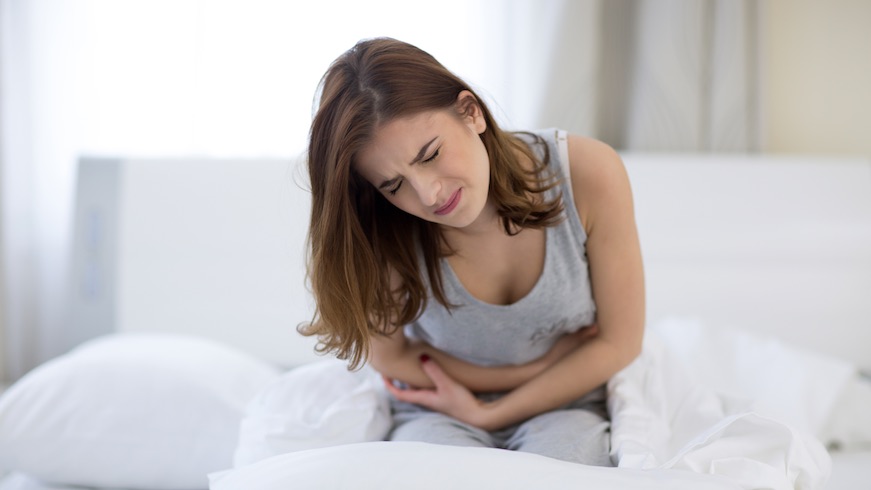You might have heard about endometriosis from celebrities like Lena Dunham and Padma Lakshmi, who have been outspoken about their struggles with the seemingly obscure, yet extremely painful condition. But do you know what it actually is and if you might be at risk? We spoke with Dr. Kathy Huang, OB/GYN and director of the Endometriosis Center at NYU Langone, about the ins and outs of the disease and common symptoms to watch out for. Here are five of the most surprising things we learned about endometriosis.
It’s unclear what causes it
Endometriosis is an inflammatory disease that occurs when the endometrium, the uterine lining that a woman’s body sheds each month during menstruation, attaches itself to an organ outside of the uterus. As to why on earth the endometrium would find its way out of the uterus, doctors don’t exactly know, says Huang. But wherever it attaches itself, the endometrium continues to bleed each month during menstruation, creating a painful, swollen lesion that develops scar tissue and further complications as it grows each month.
It’s more common than you might think
According to the Endometriosis Foundation of America, the disease affects about one in ten women in the US, and 176 million worldwide. But according to Dr. Huang, that number might be a lot higher because so many cases go undiagnosed. “People don’t know what signs to look for,” she explains. “A lot of women growing up have always been told that period pain is completely normal, just something you go through.”
Common symptoms to watch out for include heavy periods and pelvic pain during menstruation (which sometimes begins before your period or lingers well after), spotting in between menstrual cycles, digestive issues, painful intercourse, subfertility (difficulty getting pregnant) and sometimes infertility. However, Huang notes that pain ranges from mild to severe, and in some cases, women are asymptomatic.
It can occur anywhere in the body
The endometrial lining can attach itself anywhere in the body, from the ovaries to the bladder, intestines to the lungs. The symptoms will manifest differently depending on the organ. A woman with endometriosis in her bladder might experience pain or difficulty urinating, while a woman with endometriosis in her chest might see her lungs collapse and fill up with blood.
Women can develop the disease at any time during their reproductive years
While endometriosis most commonly affects women 30 to 40 years of age, any woman who menstruates is susceptible to it, from her first period until menopause.
To diagnose the condition, a doctor will discuss symptoms with the patient and perform a physical exam, but an MRI, or a laparoscopy, in which a sample of the endometrial tissue is biopsied, is the only way to confirm it.
You can all but cure it
If you’re not trying to get pregnant, taking birth control pills or hormonal contraceptives like the implant or progestin-based IUDS can suppress the growth of the endometrial lesion and even dispel symptoms, although it won’t cure it. To eradicate the endometriosis requires surgical removal of the lesion and any scar tissue created by it. Treatment varies depending on the patient’s goals and the severity of the condition, says Huang.



















